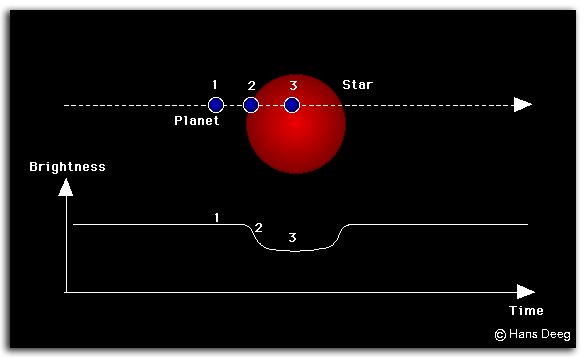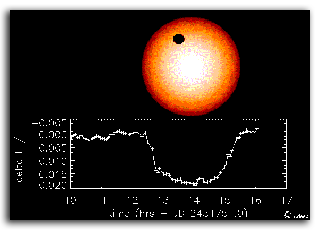How Extrasolar Planets are discovered with the Transit Method
The transit method is allowing the detection of small planets, on the order of the Earth's size, with the CoRoT mission. The radial velocity method -by which most of the planets to date have been discovered with - is basically limited to the detection of large planets with at least the mass of Uranus.

The transit method is based on the observations of a small decrease in the brightness of a star, which happens when a planet passes or 'transits' in front of its central star (see dotted line). The amount of light lost -typically between 0.01% and 1% - depends mainly on the sizes of the star and the planet. The duration of a planet depends on the distance of the planet from the star and on the mass of the star. If the star's mass and size can be derived from spectroscopic observations, the size of the planet and it's may then be found out. A transit is produced once for at each of the planet's orbits. The repeated occurrence of transits is the best way to find out if a stellar dimming is really caused by a planet - a transits needs to appear once for each 'year' of the planet.
The repeated occurrence of transits gives us also the opportunity to observe a planet's transit in the future with better instrumentation then currently possible - one day it may be possible to explore the atmosphere by spectroscopy (of atmospheric absorption lines while transiting) and to look for indications of life - for example through the detection of free oxygen in its atmosphere.
Below is a link to an animation of a real transit, based on data that were obtained with the 0.9m Telescope at Sierra Nevada Observatory of IAA.










